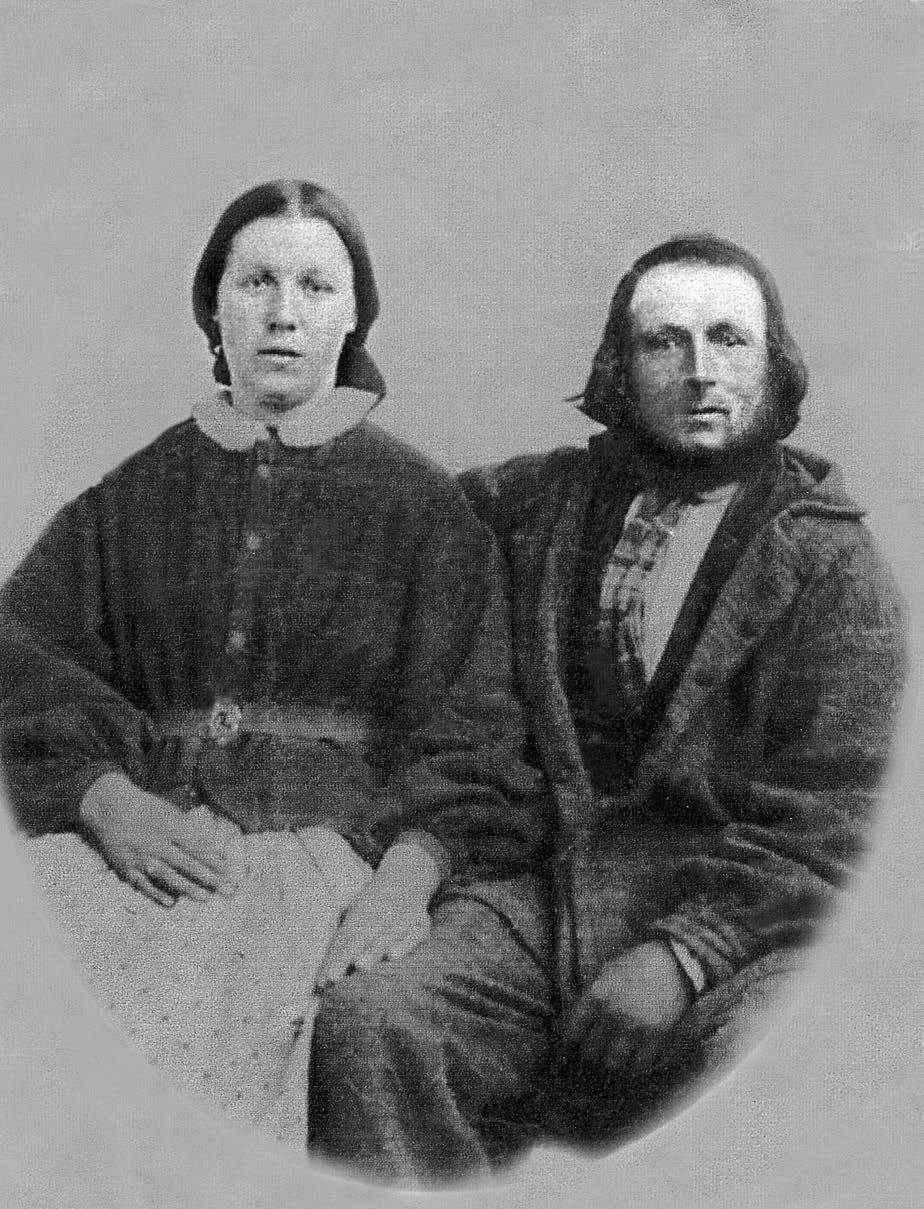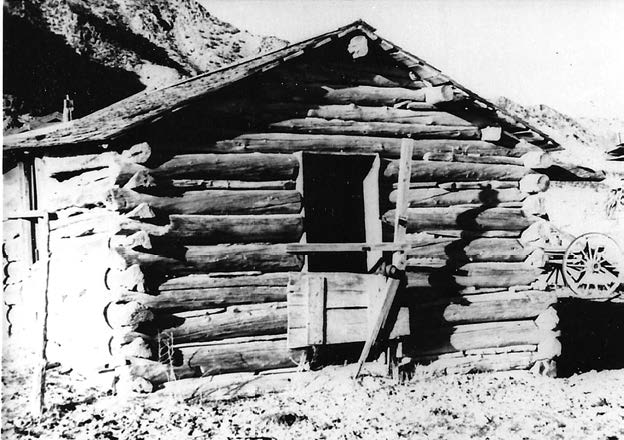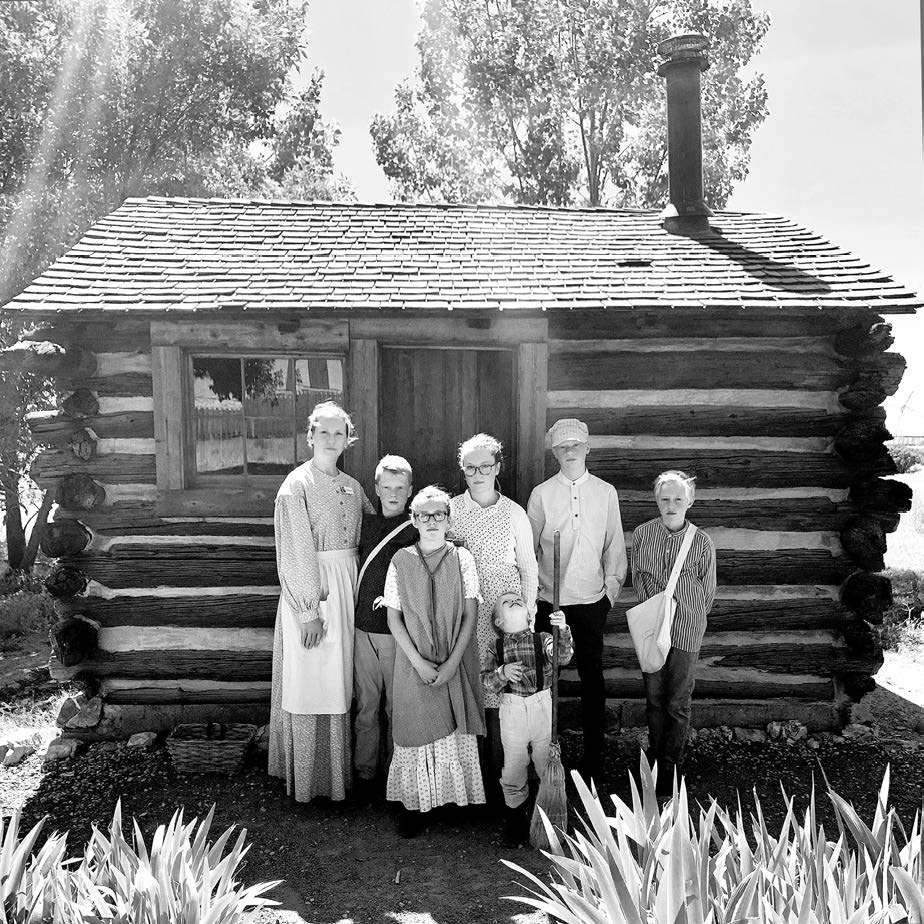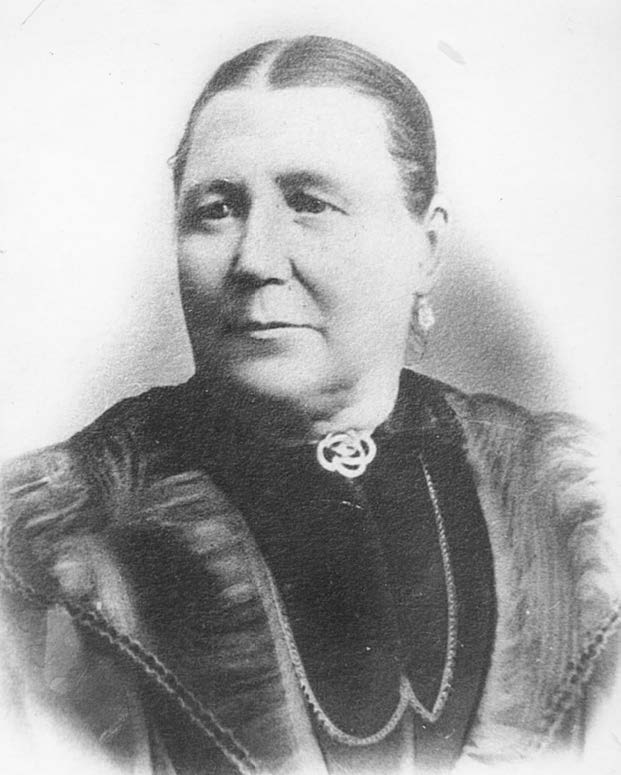Epilogue
“Epilogue,” in Rescued: The Courageous Journey of Mary Goble Pay, ed. Clark B. Hinckley (Provo, UT: Religious Studies Center, Brigham Young University; Salt Lake City: Deseret Book), 63‒72.
After arriving in the Salt Lake Valley on 11 December 1856, Mary and her family remained for a week in Salt Lake. “One afternoon,” she wrote, “there came a knock at the door. It was uncle John Wood. When he met father he said, ‘I know it all, Bill.’ Both of them cried. Oh, I was glad to see my father cry.” The Gobles went to Farmington, where they stayed with the Woods until the following April. Mary’s widowed father, William Goble, met Susannah Patching, a member of the Martin company, the evening he arrived in Farmington, and the two were married the next day. Mary says simply, “My father remarried.”[1]
Because of the condition of her feet, Mary could not get her shoes on until June. In July she went to live with a Dr. Wiseman, who told her that she had gangrene in her feet and that they would have to be removed at the ankle. Relying on the promise of Brigham Young that she would never have to have any more of her feet cut off, she refused. Mary only says that an old woman came to the house one day and applied a poultice that healed her feet, to the amazement of the doctor. Mary went through a painful but successful rehabilitation to learn how to walk again, adding, “I have never had to have any more taken from them. The promise of Brigham Young has been fulfilled and the pieces of toe bone have worked out.”[2]
 Mary Goble Pay and Richard Pay
Mary Goble Pay and Richard Pay
In the spring of 1858, William and his family moved south to Nephi, where his sister, Mary Ann, and her husband, Thomas Carter, had settled five years earlier. Mary stayed at Spanish Fork for a year before going on to Nephi in the spring of 1859. In Nephi she stayed with her aunt and uncle. On 26 June 1859, she married Richard Pay. She was sixteen, and he was thirty-seven.
Richard and Sarah, his first wife, both of whom had joined the Church in Dover, Kent, England, had sailed from Liverpool on the Horizon with the Gobles. Richard is listed on the ship register as a shoemaker. Both the Gobles and the Pays were members of the Hunt company. William Goble helped Richard bury an infant daughter at Chimney Rock, and Richard helped William bury little Edith in Wyoming. Richard’s wife, Sarah, died at Fort Bridger, leaving him alone. In the spring of 1857, Richard—who had had sufficient means to purchase passage to America for his family and outfit an ox team in 1856—walked with all his earthly belongings tied up in a handkerchief from Salt Lake City to Nephi.
Of their early years together, Mary says simply, “When I was married it was very hard times.” They were refugees in a foreign land, scraping out an existence by growing a few crops in an environment that could not have been more different from England’s green and pleasant land. And like so many others, Mary and Richard had left loved ones buried in graves they would never visit.
 Pay Cabin in Leamington.
Pay Cabin in Leamington.
Mary eventually bore thirteen children, three of whom died in infancy. She and Richard were sealed in the Endowment House in Salt Lake City on 8 December 1865; that same day, she was sealed to her father and her deceased mother.[3] The family lived in Nephi for twenty-two years, then moved to nearby Leamington, Utah, where Richard built a little log house on 160 acres that they homesteaded. The 1880 census lists Richard as a shepherd. Mary and Richard lived with seven of their children (three had died in infancy and three would be born later) in that little cabin before building a small two-story home on the farm. The cabin was moved to This Is The Place Heritage Park in 2001.
Richard died 18 April 1893 at age seventy-one, leaving forty-nine-year-old Mary with seven children still at home (two of whom had been born in the little cabin in Leamington). The next year her oldest living son, George, died, leaving a wife and five children. Her daughter Sarah died the following year at age fourteen. Mary then returned to Nephi, where she supported the family by working as a practical nurse.
 Pay cabin at This is the Place Heritage Park, 2019, with descendants of Mary Goble Pay
Pay cabin at This is the Place Heritage Park, 2019, with descendants of Mary Goble Pay
Mary reported that her deceased husband came to visit her on several occasions in dreams or visions. On 14 September 1913, she told her daughter Ettie, with whom she was living, that Richard had visited her again during the night and had everything ready for her to come and be with him. She died quietly the next morning with her children gathered around her. She was seventy years old and was buried in the Vine Bluff Cemetery in Nephi next to her husband.
• • •
On 11 December 2006, more than 250 descendants of Mary Goble and Richard Pay—all active members of The Church of Jesus Christ of Latter-day Saints—gathered in the Social Hall at This Is The Place Heritage Park to mark the 150th anniversary of Mary’s arrival into the valley. It was a cold winter night, but all were dressed in warm coats, warm hats, and warm gloves. They arrived in warm cars, met in a warm building, and returned to warm homes.
Notes
 Mary Goble Pay
Mary Goble Pay
[1] Susannah Patching was forty-nine and had never been married; William was a thirty-nine-year-old widower with four living children and four deceased children. William and Susannah appear in the 1860 census in Nephi as husband and wife and were sealed in the Endowment House on 8 December 1865. William was sealed to Mary Penfold on the same day. Susannah died 29 August 1892 and is buried next to William in Vine Bluff Cemetery in Nephi, Utah. A widower again at age seventy-five, William married Mary Ann Ewers Fowkes, the widow of James Fowkes. Mary Ann died on 17 February 1898, and William followed her in death about two weeks later, 9 March 1898. Their deaths were noted in an obituary in the Salt Lake Herald on 10 March 1898 under the headline “Passing of the Pioneers: William Goble of Nephi Quickly Follows His Wife to the Grave.”
[2] This information appears in the Larsen manuscript but is not included in Mary’s holograph. Dr. John Wiseman and his wife Mary Ann were members of the Hunt company. He is listed in the roster as a surgeon, and they are the only Wisemans who appear in emigration records before 1857. The Wisemans’ two sons, ages two and seven, died during the journey. They may have taken Mary in partly to provide some companionship for Mary Ann Wiseman.
[3] As noted earlier, William Goble was sealed to Mary Penfold and Susannah Patching on this same date.
